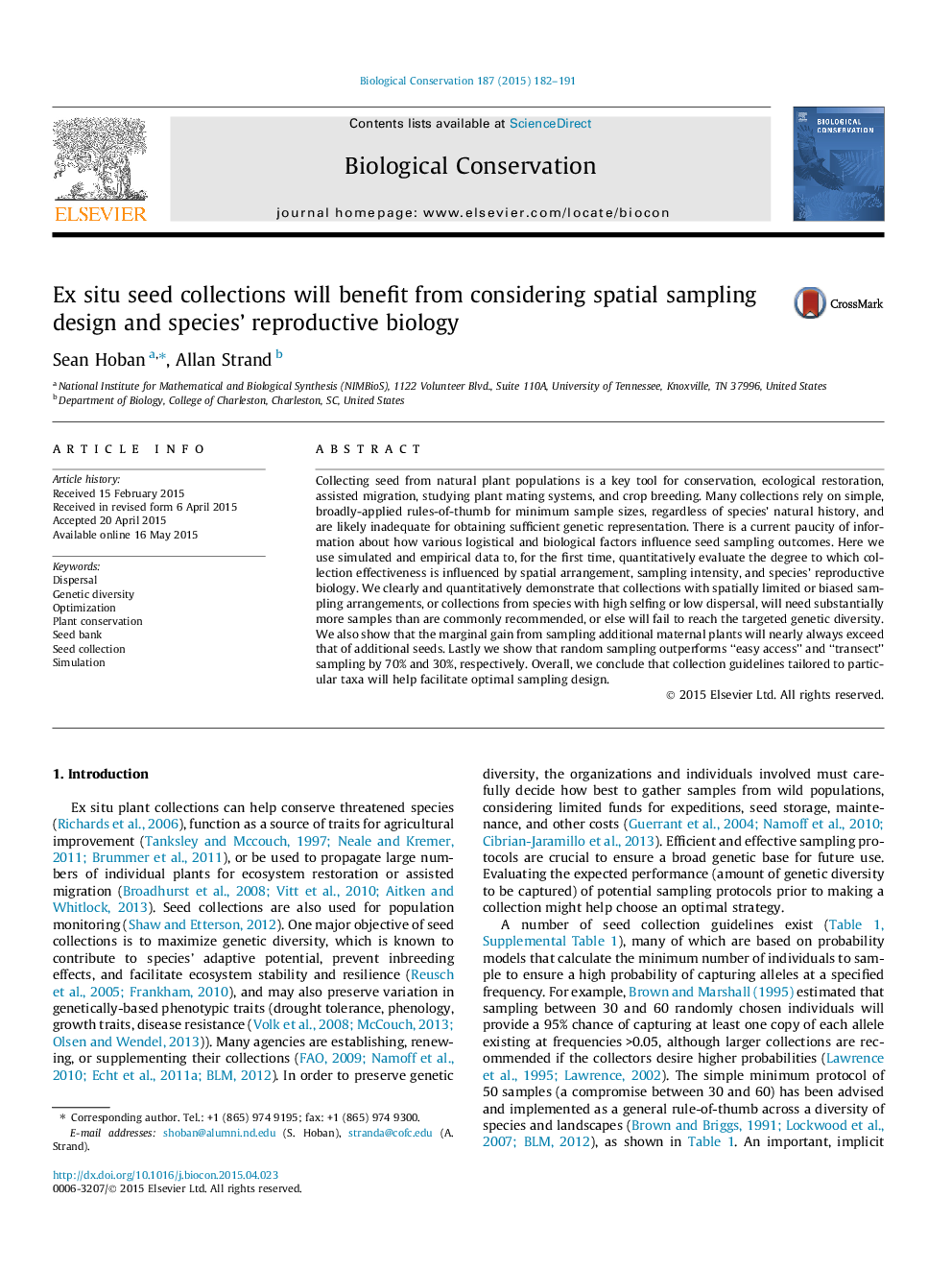| Article ID | Journal | Published Year | Pages | File Type |
|---|---|---|---|---|
| 6299250 | Biological Conservation | 2015 | 10 Pages |
Abstract
Collecting seed from natural plant populations is a key tool for conservation, ecological restoration, assisted migration, studying plant mating systems, and crop breeding. Many collections rely on simple, broadly-applied rules-of-thumb for minimum sample sizes, regardless of species' natural history, and are likely inadequate for obtaining sufficient genetic representation. There is a current paucity of information about how various logistical and biological factors influence seed sampling outcomes. Here we use simulated and empirical data to, for the first time, quantitatively evaluate the degree to which collection effectiveness is influenced by spatial arrangement, sampling intensity, and species' reproductive biology. We clearly and quantitatively demonstrate that collections with spatially limited or biased sampling arrangements, or collections from species with high selfing or low dispersal, will need substantially more samples than are commonly recommended, or else will fail to reach the targeted genetic diversity. We also show that the marginal gain from sampling additional maternal plants will nearly always exceed that of additional seeds. Lastly we show that random sampling outperforms “easy access” and “transect” sampling by 70% and 30%, respectively. Overall, we conclude that collection guidelines tailored to particular taxa will help facilitate optimal sampling design.
Related Topics
Life Sciences
Agricultural and Biological Sciences
Ecology, Evolution, Behavior and Systematics
Authors
Sean Hoban, Allan Strand,
